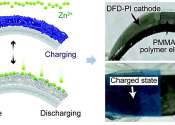Chill out: Advanced solar tech runs cooler and lasts longer
Australian photovoltaics researchers have made a 'cool' discovery: Singlet fission and tandem solar cells—two innovative ways to generate solar power more efficiently—also help to lower operating temperatures and keep ...
May 10, 2021
0
365









